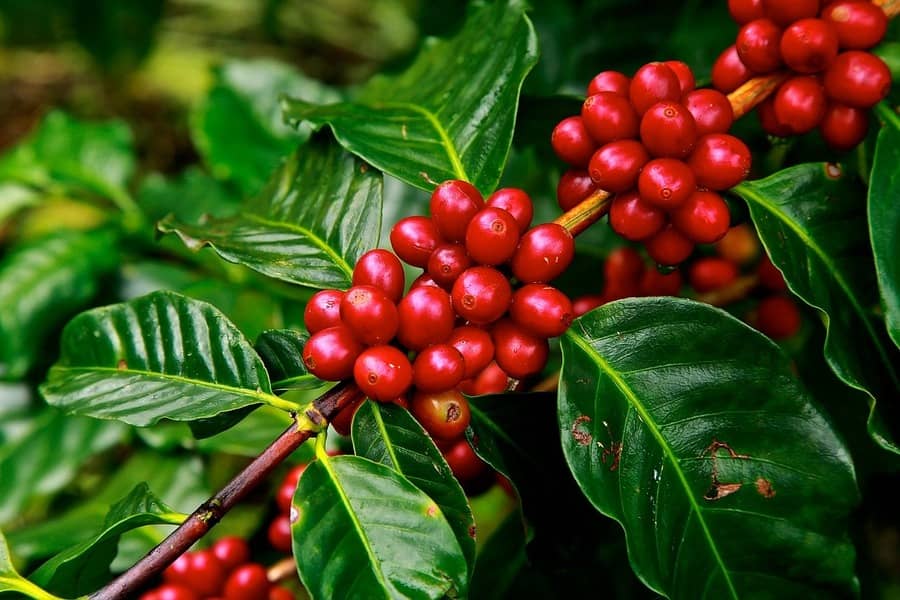The flow of business with the new coffee crop is gaining intensity, driven by the significant improvement in prices. Although it may still seem strange for some growers to accept a future price below the physical market, it is clear that the jump in prices has increased the willingness to sell coffee from the new crop. This increase in interest rates has favored business, as indicated by the SAFRAS survey, which reveals that, through April 9, 16% of the potential of Brazil’s 2024 crop had already been committed. This represents an increase of 5% compared to the previous month. However, despite growing, business flow is still behind the same period last year, when it reached around 23% of the expected crop, and is below the average for the period, which is 24%.
Arabica sales rose to 19% of the potential of Brazil’s 2024 crop, compared to 25% in the same period last year and the five-year average, which is 28%. The jump in prices, which have risen by more than BRL 100 a bag since the beginning of April, has accelerated sales. Good coffee from the south of Minas Gerais is pegged between BRL 1,125 and 1,135 per 60-kg bag (USD 221.50 a bag) for delivery and payment in September 2024. As for the finest cup in the Cerrado Minas Gerais and Mogiana paulista, prices exceed the mark of BRL 1,200 a bag, being indicated between BRL 1,205 and 1,220 a bag (USD 237 to USD 240 a bag), depending on the quality, appearance and screen (size of beans).
The arabica harvest may advance a little in the south of Minas due to faster maturation. Some coffee fruit has fallen from trees, but nothing that goes beyond normality for this period of the year. The biggest concern is over the heat in the last quarter of last year, which might result in a smaller crop. But to have a more conclusive outlook, the harvest and, especially, processing need to advance further. In Matas de Minas Gerais, the hotter and drier climate between November and December last year also accelerated maturation. Heavy rain in March resulted in a large amount of coffee dropping to the ground, leading growers to carry out the so-called “ground harvest.” This situation is more critical at altitudes between 700 and 800 meters. In higher regions, maturation is slower, and crops are developing normally. It is now possible to find hard cup coffee from the new crop with 50% of defects at BRL 950 a bag, with the price rising to BRL 1,000 a bag for a batch with up to 30% of defects. A mild Rio cup costs around BRL 1,025 a bag (USD 202 a bag). High prices are attracting growers, who are accelerating the coffee harvest, drying and processing process to take advantage of the price momentum.
As for conillon coffee, sales are also gaining pace and reached 9% of production. Even with the advance, sales are still below the same period last year, when 18% of production was negotiated, and below the five-year average, which is 18%. Reluctance from sellers and resistance from the domestic roasting industry explain this behavior. The expectation of a delay in the harvest in Indonesia, due to excess moisture, and the uncertainties regarding the next crop in Vietnam, due to the lack of rain during blossoming, should continue to attract external interest and guarantee liquidity for export business to Brazilian conillon, especially at the beginning of Brazil’s 2024 crop.
The price of conillon 7/8 coffee in Colatina, Espírito Santo, is BRL 1,030 a bag (USD 203 a bag), arousing a little more interest among growers in negotiations with the new crop as the supply of new coffee increases in trading regions. There is already a large volume of forward sales aimed at exports, and, due to the gap in global supply, the interest in Brazilian conillon should remain high, especially at the crop arrival, which could keep exports strong and contribute to an export volume in the 24/25 season higher than in the previous season. On the other hand, the high price of conillon should drive away the roasting and grounding industry, which is resulting in an increase in arabica in blends.

